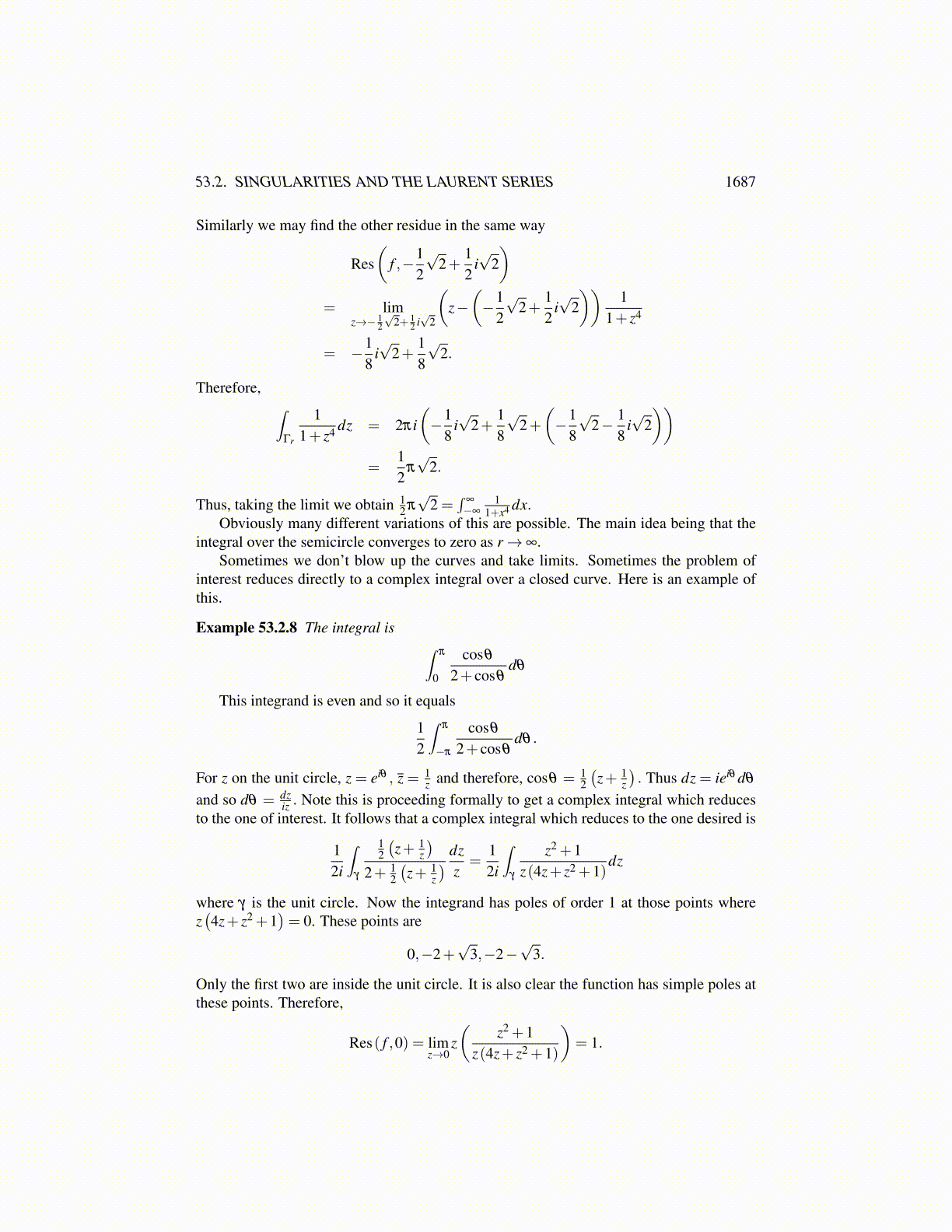
53.2. SINGULARITIES AND THE LAURENT SERIES 1687
ensured by Lemma 53.2.5 which allows the interchange of sums and integrals, if k ∈[−n,n] ,
12πi
∫γr
f (w)
(w−a)k+1 dw
=1
2πi
∫γr
∑∞m=0 am (w−a)m +∑
∞m=1 a−m (w−a)−m
(w−a)k+1 dw
=∞
∑m=0
am1
2πi
∫γr
(w−a)m−(k+1) dw
+∞
∑m=1
a−m
∫γr
(w−a)−m−(k+1) dw
=n
∑m=0
am1
2πi
∫γr
(w−a)m−(k+1) dw
+n
∑m=1
a−m
∫γr
(w−a)−m−(k+1) dw
=1
2πi
∫γr
fn (w)
(w−a)k+1 dw
because if l > n or l <−n, ∫γr
al (w−a)l
(w−a)k+1 dw = 0
for all k ∈ [−n,n] . Therefore,
ak =1
2πi
∫γr
f (w)
(w−a)k+1 dw
and so this establishes uniqueness. This proves the theorem.
53.2.3 Contour Integrals And Evaluation Of Integrals
Here are some examples of hard integrals which can be evaluated by using residues. Thiswill be done by integrating over various closed curves having bounded variation.
Example 53.2.7 The first example we consider is the following integral.∫∞
−∞
11+ x4 dx
One could imagine evaluating this integral by the method of partial fractions and itshould work out by that method. However, we will consider the evaluation of this integralby the method of residues instead. To do so, consider the following picture.